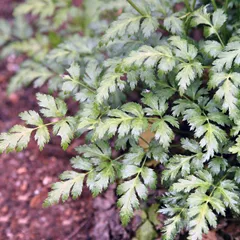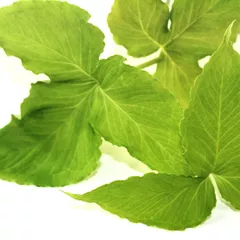Phlegm-Heat in the Middle Burner
The information provided here is not a replacement for a doctor. You shouldn't use it for the purpose of self-diagnosing or self-medicating but rather so you can have a more informed discussion with a professional TCM practitioner.
At a glance
Preliminary reading: What is a pattern?
Diagnosis
Common symptoms: Poor appetite Abdominal fullness Dry heaves or vomiting Borborygmi with diarrhea Epigastric focal distention
Pulse type(s): Rapid (Shu), Wiry (Xian)
Tongue coating: Yellow coating
Tongue color: Red tip
Treatment
Common formulas: Ban Xia Xie Xin Tang
Pathology
Phlegm-Heat in the Middle Burner is a pattern of disharmony in Chinese Medicine.
Chinese Medicine views the human body as a complex system that tends toward harmony. A pattern of disharmony is a disorder that prevents that harmony from occurring.
Patterns give rise to symptoms that may at first glance seem unrelated from a Western standpoint but that actually make a lot of sense when one understands Chinese Medicine theory. For instance here Phlegm-Heat in the Middle Burner gives rise to such diverse symptoms as epigastric focal distention, abdominal fullness, dry heaves or vomiting and borborygmi with diarrhea.
To diagnose a pattern, analyzing a patient's pulse as well as their tongue is common practice. In the case of Phlegm-Heat in the Middle Burner patients tend to exhibit rapid (Shu) or wiry (Xian) pulses as well as a red tip tongue with yellow coating.
Patterns aren't exactly the Chinese Medicine equivalent to Western diseases, they're rather the underlying causes behind diseases or health conditions. Here Phlegm-Heat in the Middle Burner is thought to sometimes induce conditions such as peptic ulcers, chronic hepatitis or hepatitis (as well as eight others).
Diagnosing Phlegm-Heat in the Middle Burner
Diagnosing a pattern in Chinese Medicine is no easy feat and should be left to professional practitioners. In particular one has to know how to differentiate between different types of pulses and tongue coatings, shapes and colors as well as learn to read from a long list of seemingly unrelated symptoms.
Pulse type(s): Rapid (Shu) or wiry (Xian)
Tongue coating: Yellow coating
Tongue color: Red tip
Main symptoms: Poor appetite Abdominal fullness Dry heaves or vomiting Borborygmi with diarrhea Epigastric focal distention
Treating Phlegm-Heat in the Middle Burner
Herbal formulas used to treat Phlegm-Heat in the Middle Burner



The top herbs in Ban Xia Xie Xin Tang are Goldthread Rhizomes (Huang Lian), Baikal Skullcap Roots (Huang Qin) and Crow-Dipper Rhizomes (Ban Xia)
Ban Xia Xie Xin Tang
Source date: 220 AD
Number of ingredients: 7 herbs
Key actions: Reverses the flow of Rebellious Stomach Qi. Relieves both Heat and Cold Stagnation in the gastrointestinal tract.
Formula summary
Ban Xia Xie Xin Tang is a 7-ingredient Chinese Medicine formula. Invented in 220 AD, it belongs to the category of formulas that harmonize Stomach-Intestines.
Besides Phlegm-Heat in the Middle Burner, Ban Xia Xie Xin Tang is also used to treat Phlegm-Fluids in the Stomach and Small intestine.
Related conditions
Please keep in mind that a Western Medicine condition can be caused by several Chinese Medicine patterns of disharmony and vice versa. As such a patient suffering from one of the conditions below will not necessarily be suffering from Phlegm-Heat in the Middle Burner, it is just one pattern that's commonly associated with the condition. Click on a condition to learn what other patterns it's associated with.
Peptic ulcers Chronic hepatitis Hepatitis Chronic cholecystitis Gastroesophageal reflux disease Gastritis Colitis Chronic gastroenteritis Acute gastroenteritis Chronic colitis Early-stage cirrhosis
